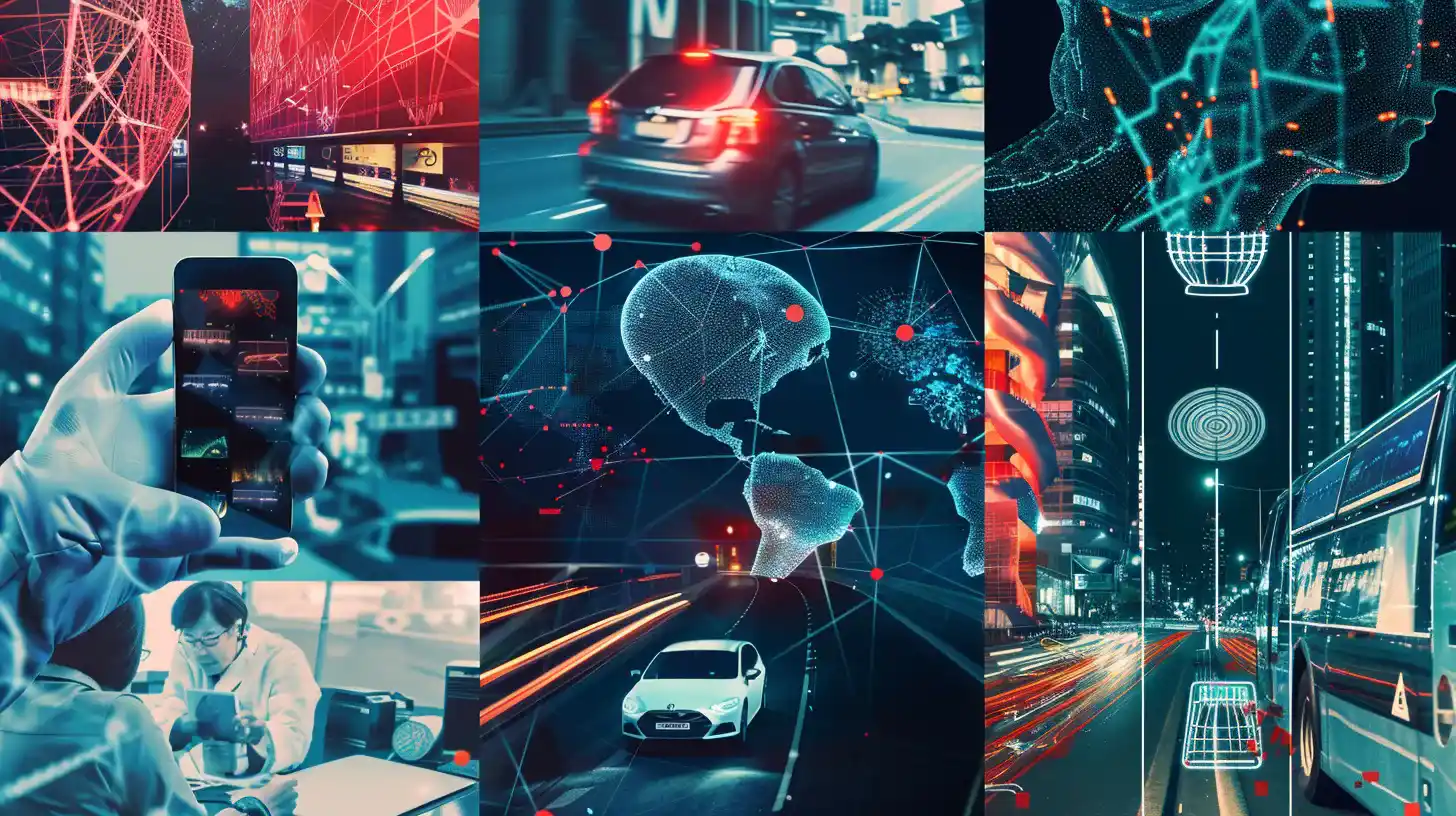Table of Contents
The world of Artificial Intelligence (AI) can be a labyrinth of complex terms. Machine learning (ML) and deep learning (DL) are two concepts that often get tossed around interchangeably. However, understanding the subtle differences between machine learning vs deep learning is crucial for navigating this exciting field. This comprehensive guide will equip you with a clear understanding of both ML and DL, their characteristics, applications, and when to choose one over the other.
Machine Learning Defined: Imagine a computer program that learns and improves from experience, without explicit programming. That’s the essence of machine learning. By analyzing data, ML algorithms identify patterns and make predictions or decisions.
Deep Learning Defined: Deep learning is a subfield of machine learning inspired by the structure and function of the human brain. It utilizes artificial neural networks, complex interconnected layers of processing units, to learn intricate patterns from massive datasets.
Why Understanding the Difference between Machine Learning vs Deep Learning Matters?
Both ML and DL are powerful tools for AI, but they excel in different areas. Recognizing these distinctions empowers you to choose the right machine learning vs deep learning approach for a specific task.
Key Concepts
Machine Learning Algorithms: ML encompasses a diverse range of algorithms, from linear regression for making predictions to decision trees for classification tasks. These algorithms require careful selection and configuration based on the problem at hand.
Deep Learning Neural Networks: Deep learning leverages artificial neural networks, mimicking the human brain’s structure. These networks consist of interconnected nodes (artificial neurons) that process information layer by layer, progressively extracting higher-level features from data.
Supervised vs Unsupervised Learning: This distinction applies to both ML and DL. Supervised learning involves training with labeled data, where each data point has a corresponding answer. On the other hand, unsupervised learning deals with unlabeled data, where the algorithm must identify patterns and relationships on its own.
Characteristics of Machine Learning
Limited Data Processing: Traditional machine learning algorithms often need help with exceptionally large datasets. Feature engineering, the manual process of extracting relevant features from data, becomes a critical but time-consuming step in machine learning.
Interpretability: A key advantage of many machine learning models is their interpretability. We can often understand the logic behind their decisions, offering valuable insights into the learning process. This is a major advantage when dealing with tasks where understanding the “why” behind a decision is crucial.
Characteristics of Deep Learning
Big Data Processing: Deep learning thrives on massive amounts of data. Its complex neural network architectures can effectively handle big data, uncovering hidden patterns invisible to simpler ML models. This makes deep learning a powerful tool for tasks where vast amounts of data are available.
Automated Feature Learning: Deep learning eliminates the need for manual feature engineering, a significant bottleneck in traditional machine learning. The neural network automatically extracts features from raw data during the training process, significantly reducing human effort and saving valuable time.
Black Box Nature: While powerful, deep learning models can be opaque. The complex decision-making process within the neural network can be difficult to interpret, making it challenging to understand exactly how the model arrives at its conclusions. This lack of interpretability can be a drawback in situations where understanding the model’s reasoning is essential.
Machine Learning
- A part of AI
- Able to train with less data
- Needs additional human involvement for correction and learning
- Less training time and decreased accuracy
- Creates straightforward, direct connections
- Training can be done on a CPU (central processing unit)
Deep Learning
- A part of machine learning
- Requires a large amount of data to train
- Acquires knowledge independently through surroundings and previous errors
- Longer training time and increased accuracy
- Creates intricate connections that are not in a straight line
- A specialized GPU is required for training purposes
Applications in the Real World
Machine Learning Use Cases: From spam filtering in emails to product recommendations on e-commerce platforms, machine learning applications are woven into the fabric of our daily lives. Fraud detection, credit scoring, and even weather forecasting all leverage the power of ML algorithms.
Deep Learning Use Cases: Deep learning has revolutionized fields like computer vision and natural language processing. Facial recognition in smartphones, image categorization for self-driving cars, and even machine translation rely on deep learning models. Deep learning’s ability to process complex data types makes it ideal for tasks that require advanced image or language understanding.
Performance Comparison
- Accuracy and Efficiency: Both ML and DL can achieve high levels of accuracy. However, deep learning models often outperform traditional ML approaches on complex tasks, especially when dealing with large amounts of data. However, for simpler tasks or when data availability is limited, machine learning can still be a very effective choice.
- Scalability: Deep learning models tend to scale well with increasing data volumes, continuously improving their performance. On the other hand, the effectiveness of some ML algorithms may plateau with limited data. This makes deep learning a strong choice for applications where data constantly grows and improves the model.
- Resource Requirements: Training deep learning models often requires significant computational resources like powerful GPUs. This can be a cost consideration, especially for large-scale projects. Machine learning models, on the other hand, can often be trained on standard computer hardware, making them more accessible for resource-constrained environments.
Case Studies
Real-Life Examples of Machine Learning:
- Recommendation Systems: Netflix uses machine learning to recommend movies and shows based on your viewing history and preferences. This is a classic example of supervised learning in action.
- Spam Filtering: Email providers leverage ML algorithms to identify and filter out spam emails with high accuracy. Here, machine learning models are trained on labeled data consisting of emails categorized as spam or not spam.

Real-Life Examples of Deep Learning:
- Facial Recognition: Social media platforms like Facebook employ deep learning for facial recognition in photo tagging and security features. Deep learning excels at tasks like facial recognition due to its ability to process and analyze vast amounts of image data.
- Self-Driving Cars: Deep learning is at the core of self-driving cars, enabling them to recognize objects, navigate roads, and make real-time decisions in a complex environment. Deep learning’s proficiency in image recognition and handling large datasets is essential for self-driving car technology.
Future Trends
Advancements in Machine Learning: Machine learning research is constantly evolving. We can expect advancements in explainable AI, making ML models more interpretable and trustworthy. Additionally, research in automating feature engineering and leveraging transfer learning will further enhance the capabilities of machine learning.
Advancements in Deep Learning: Deep learning is pushing the boundaries of AI. There’s ongoing exploration into developing more efficient neural network architectures and incorporating new paradigms like neuromorphic computing for faster and more power-efficient deep learning models.
Conclusion
Recap of Key Differences:
Here’s a quick recap to solidify the distinction between machine learning vs deep learning:
- Data Dependency: Machine learning often struggles with big data, whereas deep learning thrives on it.
- Feature Engineering: Machine learning typically requires manual feature engineering, while deep learning automates this process.
- Interpretability: Machine learning models are generally more interpretable than deep learning models, offering better transparency in decision-making.
- Scalability: Deep learning models tend to scale better with increasing data.
- Resource Requirements: Deep learning models often require more computational resources.
Choosing the Right Approach:
The selection between machine learning and deep learning hinges on the specific task at hand. Consider these factors when evaluating machine learning vs deep learning for your project:
- Data Availability: If you have a limited dataset, a traditional machine learning approach might be sufficient. Deep learning shines with massive datasets.
- Problem Complexity: For complex problems with intricate patterns, deep learning might be the better choice due to its superior representation learning capabilities.
- Explainability Requirements: If the interpretability of the model’s decisions is crucial, machine learning might be preferable.
- Resource Constraints: Consider the computational resources available when choosing between machine learning vs deep learning.
FAQs
1. Is machine learning the same as deep learning?
Machine learning is a broader field that encompasses deep learning. Deep learning is a specific type of machine learning that utilizes artificial neural networks.
2. Which is better, machine learning or deep learning?
There’s no single “better” option. The best choice depends on your specific needs. Consider factors like data availability, problem complexity, interpretability requirements, and resource constraints.
3. Can I learn machine learning and deep learning on my own?
Absolutely! There are many online resources, tutorials, and courses available to help you learn about machine learning and deep learning.
4. What are some applications of machine learning and deep learning outside of tech?
Machine learning and deep learning are finding applications in various fields, including healthcare, finance, manufacturing, and even scientific research.
5. What is the future of machine learning and deep learning?
The future of machine learning and deep learning is bright! We can expect advancements in areas like explainability, efficiency, and the development of new applications across various industries.





